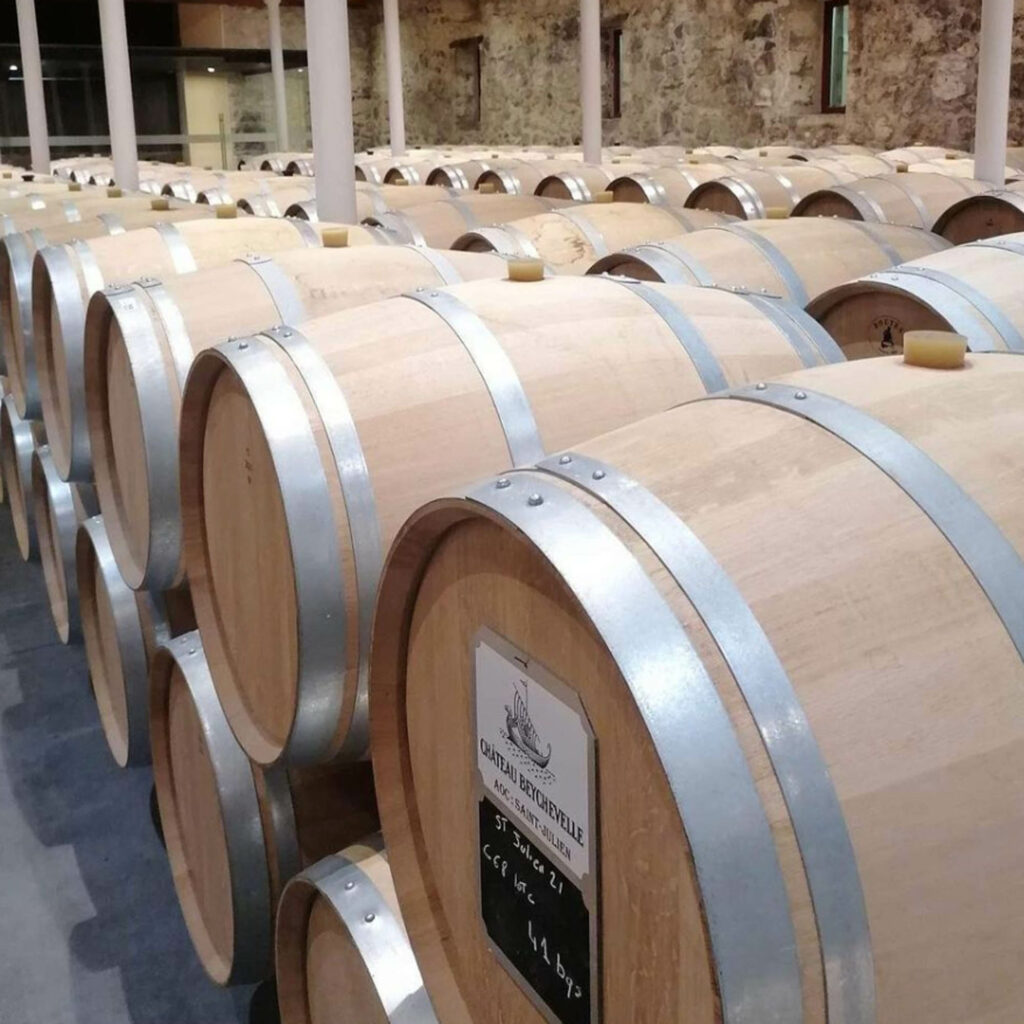

Stretching north from Bordeaux along the Gironde River, the Médoc is where Bordeaux’s fame was born. It’s a landscape of sweeping vineyards, gravelly soils, and grand châteaux that seem to rise straight out of the vines. Yet for all its prestige, the Médoc remains wonderfully down-to-earth. It’s a place where farmers, winemakers, and families have been perfecting their craft for centuries.
This is the birthplace of Cabernet Sauvignon, the grape that came to define Bordeaux’s Left Bank style: bold, structured, and beautifully age-worthy. Blended with Merlot and Cabernet Franc, the wines of the Médoc show the region’s hallmark balance: elegance with power, freshness with depth.

Wine has flowed through the Médoc since Roman times, but it was the Dutch engineers of the 17th century who truly changed its destiny. They drained the marshy land north of Bordeaux, uncovering layers of gravel that would become some of the most prized soils in the world. These free-draining, sun-warmed gravels turned out to be perfect for Cabernet Sauvignon, allowing the vines to dig deep roots and produce grapes full of concentration and character.
The result? A collection of wines that range from silky and refined to deep and brooding, and a region that’s home to many of the most famous names in wine: Château Margaux, Château Latour, Château Lafite-Rothschild, and Château Mouton-Rothschild, to name just a few.
The Médoc is also the heart of the 1855 Bordeaux Classification, which listed 60 of the 61 top red wines of Bordeaux (the only exception being Haut-Brion from Graves). That historic hierarchy still shapes the way the world views Bordeaux today.
Drive up the “Route des Châteaux” (Châteaux Road), and you’ll quickly see why the Médoc is so special. The soil shifts subtly from commune to commune. Gravel in Pauillac, clay in Saint-Estèphe, fine sand in Margaux; each variation creates its own expression of Cabernet. The climate here is gentle, tempered by the nearby Atlantic and the Gironde estuary, giving the vines long, even ripening seasons.
These conditions yield wines with remarkable balance: dark fruit, tobacco, graphite, and cedar, framed by polished tannins that soften gracefully over time. Médoc wines aren’t just powerful; they’re deeply nuanced… a reflection of the land and the patient hands that tend it.
One of the pleasures of visiting the Médoc is realizing that grandeur doesn’t always mean size. Yes, the great estates of Margaux and Pauillac are breathtaking, but beyond their ornate gates are hundreds of smaller family-run properties that pour their hearts into every vintage.
At Château Beychevelle or Château Gruaud-Larose, the balance of heritage and innovation is on full display. But wander a bit further and you’ll find winemakers who greet you in their courtyard, eager to share a glass and a story. The Médoc may have a reputation for formality, but at its core, it’s about generosity, the kind that flows as freely as the wine itself.


Every great wine region has its comfort foods, and in the Médoc, hearty dishes take center stage. Try lamproie à la bordelaise (lamprey stewed in red wine sauce), or a perfectly seared entrecôte à la Bordelaise paired with a mature Cabernet.
Rustic bistros along the D2 road serve market-fresh lunches where winemakers gather for a glass and conversation before heading back to the vines.
Look closely, and you’ll also see how Paris left its mark. Many of the Médoc’s most striking châteaux were designed by 19th-century Parisian architects, lending the countryside a quiet grandeur that mirrors the elegance of its wines.
A typical day begins with a scenic drive north along the Route des Châteaux, lined with vineyard after vineyard.
Your first stop might be a Grand Cru Classé estate in Margaux, where you’ll meet the winemaker and walk through barrel rooms filled with the scent of oak and spice.
Lunch is at a local bistro. Casual, lively, and full of winemakers catching up over a bottle from the latest vintage.
In the afternoon, you’ll visit a second estate in Saint-Julien or Pauillac, where tradition meets modernity in gleaming stainless-steel vats and centuries-old stone cellars.
Before heading back to Bordeaux, perhaps you’ll stop for a chocolate tasting at a local artisan shop… because even in wine country, there’s always room for dessert.
By the end of the day, the Médoc’s magic feels complete: history under your feet, Cabernet in your glass, and a deep appreciation for the craftsmanship that defines this legendary corner of Bordeaux.
